This piece is part of a series titled “Nonstate armed actors and illicit economies in 2022” from Brookings’s Initiative on Nonstate Armed Actors. It is an extended and updated version of the author’s “A slim hope for negotiating a settlement to Ethiopia’s Tigray conflict,” originally published in Brookings’s Foresight Africa 2022 report.
The year-long conflict in Ethiopia pitting the Tigray People’s Liberation Front (TPLF) and its allies against the Ethiopian government has caused thousands, perhaps tens of thousands, of battlefield casualties. All warring parties have perpetrated severe human rights abuses. In the massive humanitarian catastrophe caused by the conflict, 5.2 million people in Ethiopia’s north have faced hunger and lacked basic supplies for a year as the government purposefully sought to strangle the Tigray region and violence hampered aid delivery. Hundreds of thousands have been displaced and suffered in the Amhara and Afar regions. The war has pulled in neighboring countries, and its persistence threatens the stability of the Horn of Africa and Red Sea regions. Yet despite intense diplomatic engagement, including by the United States, the African Union, and European countries, the conflict dynamics have been mostly driven by battlefield circumstances.
The most recent reversal of military fortunes allowed the Ethiopian government, severely embattled until November, to push the TPLF back into Tigray. The December 21 decision of Prime Minister Abiy Ahmed to halt the counteroffensive of the Ethiopian National Defense Forces (ENDF) at Tigray’s borders gives some hope that international diplomacy, bolstered by a U.S.-created sanctions regime, could finally help incentivize a negotiated end to the conflict. But the hope is slim, with various ominous clouds hanging over any prospect of a rapid and lasting negotiated settlement. It yet remains to be seen whether Abiy’s recent decisions reflect a new-found realization that some political accommodation with TPLF is necessary, a hope for a victor’s peace, or merely a tactical — and in vain — gambit to avoid U.S. economic sanctions.
The background
Since 2018, ethnic tensions and competition over state resources and power have been intensifying in Ethiopia, as the country has sought to move away from three decades of authoritarian rule by the Ethiopian People’s Revolutionary Democratic Front (EPRDF), which was dominated by the Tigray ethnic minority. Elected prime minister in 2018, Abiy, an Oromo, struggled to stave off pent-up grievances of long-suppressed ethnic groups, including the Oromo and Amhara, and demands for faster economic redistribution. With tensions resulting in ethnic violence, assassinations, and internal displacement, Abiy responded with authoritarian measures and confrontational attitude toward Tigray political leaders, seeking to prosecute them for EPRDF crimes.
In turn, Tigray leaders started to sabotage Abiy’s government. After Abiy unilaterally postponed Ethiopia’s August 2020 elections, using the COVID-19 pandemic as justification, Tigray leaders went against his orders and held elections in September 2020. Fearing the federal government’s response, Tigray leaders seized local military depots.
Hoping for a rapid crushing of the TPLF and a strong deterrent message to other ethnic groups, Abiy responded with military force and enlisted the help of Eritrea, a long-term TPLF enemy.
The battlefield swings
Since November 2020, the Tigray war has seen dramatic reversals of military fortunes for the two principal warring parties. Despite ENDF initial successes, the capable Tigray forces became increasingly potent. Severe human rights abuses perpetrated against the Tigray population by ENDF and Eritrean forces helped entrench the Tigray insurgency.
By June 2021, the ENDF were routed in Tigray and Abiy ordered them out of Tigray, declaring a unilateral ceasefire. But Tigray forces rapidly pushed into neighboring Afar and Amhara on August 5, seizing the important and historic town of Lalibela. In Afar, Tigray forces sought to take a major logistical artery from landlocked Ethiopia to Djibouti to relieve Addis Ababa’s debilitating blockade of Tigray.
In summer and fall 2021, Tigray forces continued to sweep through Amhara and pushed closer to Addis Ababa even as Abiy made the fraught decision to form anti-Tigray militias across the country. By early November, the Tigray insurgency seemed on the doorstep of the capital and the government’s survival appeared precarious.
Like Abiy before, the TPLF leadership exhibited little willingness to negotiate compromises, asking for the formation of a transitional government, Abiy’s resignation, and return of Tigray areas occupied by the Amhara.
Yet through the acquisition of drones from Turkey, the United Arab Emirates, and Iran and aerial bombardment of the Tigray forces, the ENDF stopped the onslaught and drove Tigray forces out of Amhara and most of Afar. The drone purchases took place despite strong pushback from the United States, displeased that its erstwhile key counterterrorism partner was buying weapons from a U.S. enemy — Iran — and concerned about civilian casualties and the increasingly contrarian and loose-cannon behavior of Turkey, a U.S. NATO ally.
Elusive negotiations and international engagement
Beyond controversial military support for the Ethiopian government, the conflict attracted intense international diplomacy from the United States and various European and African countries, including Kenya. Washington appointed Ambassador Jeffrey Feltman, a renowned and highly-accomplished diplomat and Brookings colleague, as special envoy for the Horn of Africa, and the African Union appointed Nigeria’s former President Olusegun Obasanjo as its high representative.
These various efforts to bring about negotiations between the Ethiopian government and the TPLF have emphasized more or less the same elements since November 2020:
- A comprehensive ceasefire;
- The withdrawal of ENDF, Tigray, Amhara, and Afar warrying parties and associated militias to their original territories and the departure of Eritrean forces from Ethiopia;
- Unhampered humanitarian access; and
- Inclusive peace negotiations about equitable power distribution in Ethiopia.
But despite the intensive international engagement, both the Ethiopian government and the Tigray forces remained essentially non-responsive, each seeking to press temporary military advantage, if not outright military defeat of the opponent, before negotiating or making any concessions.
Although Washington for years coddled the EPRDF regime and supported the Ethiopian government as a key counterterrorism ally in Somalia and the Horn of Africa, the Ethiopian government has become increasingly alienated from the United States because of Washington’s criticism of and toughening responses to the government’s complicity in the Tigray humanitarian catastrophe.
In September 2021, the United States unveiled a smart sanctions regime targeting a wide set of actors, including members of the Ethiopian government, Tigray and Amhara leaders, and Eritrean forces while exempting humanitarian aid. Sanctions against the Eritrean forces were implemented, while sanctions against others were delayed to incentivize humanitarian access and internal negotiations. Additionally, Ethiopia’s eligibility for duty-free imports under the U.S. African Growth and Opportunity Act (AGOA) was jeopardized since certification is statutorily linked to human rights compliance. AGOA brought Ethiopia about $100 million in hard cash annually and generated employment for 100,000-200,000 people, mostly southern Ethiopian women working in textile factories.
The recent reason for hope and the ominous clouds
In late fall, the sanctions regime and diplomatic engagement seemed to be producing some results. In November, the Ethiopian government finally restored a humanitarian-work license to Médecins Sans Frontières, but still withheld it from the Norwegian Refugee Council. On December 21, Abiy halted the advance of ENDF forces at the Tigray borders, though air strikes have continued into January 2022 with civilian casualties. Humanitarian access remains hampered amidst critical conditions. On December 30, Ethiopian lawmakers authorized the establishment of a commission for national dialogue, a campaign promise of the Abiy government, which was reelected in the fall.
United Nations Secretary General António Guterres and other diplomats and commentators have called on Ethiopia’s warring parties to seize the opportunity and work with international mediators, including Obasanjo, to begin end-of-conflict negotiations.
But while maintaining steadfast international mediation efforts is essential, there are ominous signs. Foremost among them is the fact that the national dialogue commission excludes the two interlocutors fundamental for any peace — the TPLF and its military ally, the Oromo Liberation Army — both designated as terrorist organizations by the Ethiopian government. Moreover, the various — highly incomplete — steps taken by the Ethiopian government may have been taken principally to avert Ethiopia’s removal from AGOA. But on January 1, the United Stated did remove Ethiopia from the trade program.
At the end of January, indirect reports began circulating that the Ethiopian government may be willing to start negotiating with the TPLF. Even should those reports prove accurate, it is not clear that Addis Ababa will seek anything other than a victor’s peace and strong punishment of the TPLF leaders, which would deter any deal. The insurgency may well resurrect itself in the Tigray region, bringing the country back to the March-April 2021 state of affairs, while the catastrophic suffering of people in northern Ethiopia continues. To demonstrate it seeks a genuinely inclusive peace, the Ethiopian government should finally allow unfettered humanitarian access to Tigray and release the many Tigray and Oromo arrested across Ethiopia merely because of their ethnicity. Abiy’s January release of several arrested opposition politicians is a good first step, but insufficient. Any meaningful negotiations will need to move away from the Abiy government’s punitive counterterrorism framework and incorporate transitional justice with leniency and inclusivity for both TPLF leaders and Tigray fighters. The Abiy government and its Amhara supporters will demand disbanding the Tigray forces, but even doing so with robust internationally-supported disarmament, demobilization, and reintegration efforts will be extremely unpalatable to the Tigray.
In short, any eventual negotiations won’t be easy or fast and may break down repeatedly.
The Brookings Institution is committed to quality, independence, and impact.
We are supported by a diverse array of funders. In line with our values and policies, each Brookings publication represents the sole views of its author(s).

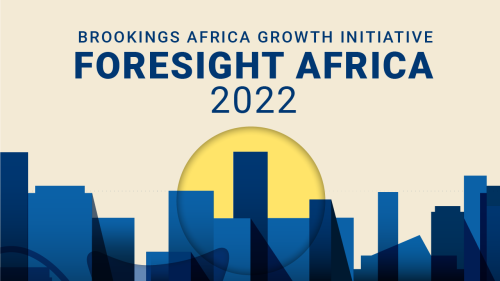
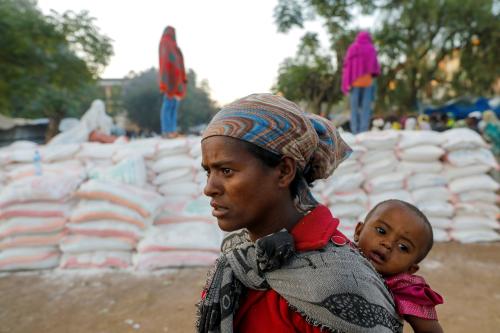
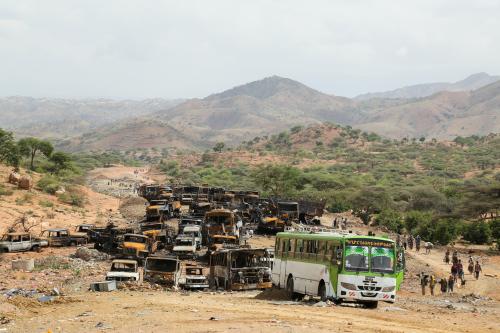

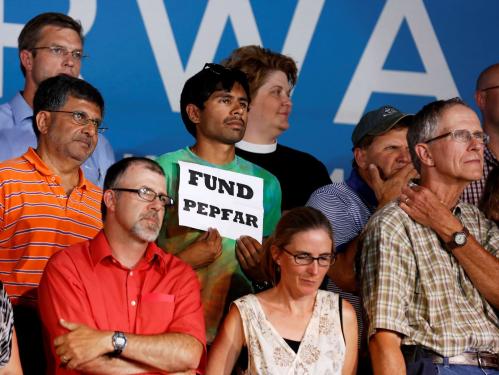
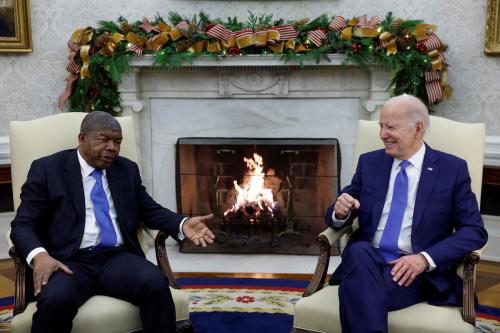
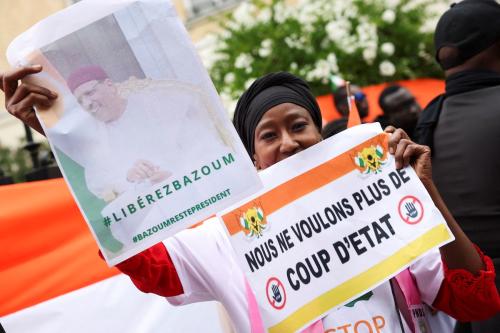
Commentary
Still far from peace in Ethiopia
February 1, 2022